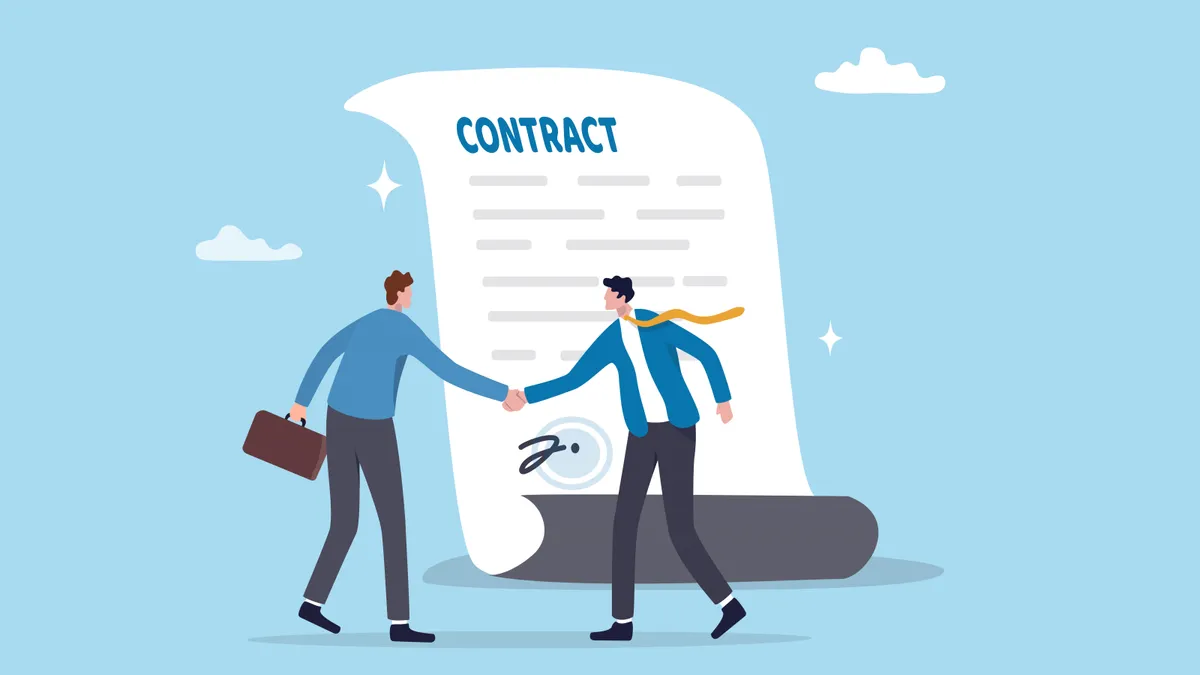David Siegel is a partner at Grellas Shah, a boutique law firm. Views are the author’s own.
In 2008, the $2 billion acquisition of Countrywide by Bank of America resulted in a $50 billion debt for BofA. This M&A deal gone wrong rings as a cautionary tale of what happens when due diligence and negotiations are poorly executed.
All business owners and leaders should have an understanding of how to effectively negotiate a commercial agreement.
Negotiations are critical
Negotiation protects your interests and helps to manage risk in making the transaction manageable and acceptable to the party receiving the contract.
Negotiation also ensures that important contract details, like timing, pricing incentives, delivery and support and intellectual property ownership are included in the agreement.
A healthy negotiation process can also reduce confusion and conflict among interested parties. Finally, negotiating a commercial agreement ensures fairness.
Understand each party’s interests
Know your own position as well as your primary and secondary objectives. For example, know where you can offer a concession — and where you cannot.
Similarly, understand your priorities. There may be five points you can concede. But if you only have to concede on one or two, which would you pick?

Ensure that you’ve identified an alternative to the agreement in the event it cannot be reached. According to Investopedia, “A best alternative to a negotiated agreement (BATNA) is a course of action that a party engaged in negotiations has determined should be taken if talks fail and no agreement can be reached.”
Finally, identify performance limitations. This is key to determining what terms you can agree to.
Say you are a vendor negotiating a contract with a prospective customer. Your service relies on a specialized widget you get from a subcontractor who requires advance payment.
Consider how that impacts payment terms with your prospective customer. Do you need the customer to pay you in advance for cash flow to pay your subcontractor?
If you don’t think through these limitations, you might not know what you can and cannot agree to.
Research
Conducting research, asking questions and responding to proposals are a few of the ways to understand the other party’s position.
I recently negotiated a software-as-a-service (SaaS) agreement on behalf of a vendor. Their customer embellished my client’s standard contract with unreasonable data privacy and security terms.
I researched the customer and found that they stored reams of personal data of individuals domestically and internationally; data privacy was a sensitive issue. But, my client’s service would not have access to any of that data; therefore, I suggested the customer’s legal team see a demo of my client’s software.
Once it became clear that my client would not have access to sensitive data, we successfully negotiated reasonable privacy and data security terms.
Managing change volume
Compartmentalization or batching decisions can be helpful in a difficult deal. Ensure that those who are not involved in the negotiation do not attempt to renegotiate resolved steps.
Requiring voluminous changes to a contract can be exhausting. Executives or other negotiators typically focus on three to five main points of contention. Depending on the context of the relationship, this could scare a party off or sour the business relationship.
With few exceptions, a successful negotiation is one where you get what you want and the counterparty gets what they need without feeling they lost.
This is an important part of my negotiating style. While I generally do not believe in unnecessary redlining of immaterial contracting issues, I usually do not limit my changes to only the essential terms — at least in a first revision.
If I care about five things, for example, I try to push back on at least eight of them. That gives me some room to give in on the three or four extraneous items, while holding firm on the most important.
This allows me to maximize the likelihood of my client getting what is key to them, while the counterparty sees us as reasonable (because we didn’t insist on winning on 100% of our points).
Expectations: set and manage them
Expectation management and sharing certain information can influence a party to change their own position.
Let’s revisit the example above where you are a vendor that relies on a subcontractor to sell you widgets to make a product. Explaining that arrangement to your customers can help convince them to pay in advance; it’s the way you manage cash flow to get them the best product.
By making extreme or unreasonable demands, the negotiator anchors the other party’s expectations far closer to what the demanding party wants than what might otherwise equitably occur.
Communication is key
Communicating both within and outside of your own team has significant value throughout the negotiation process.
Communicating internally helps to circulate information, test potential compromises and learn about changes in team members’ positions.
External communication can help to ensure that interest in the agreement is ongoing; establish or change positions; and resolve misunderstandings.
A final thought
While negotiating commercial agreements may take time and effort, it behooves both parties to go through the process to ensure a fair and equitable agreement.


















